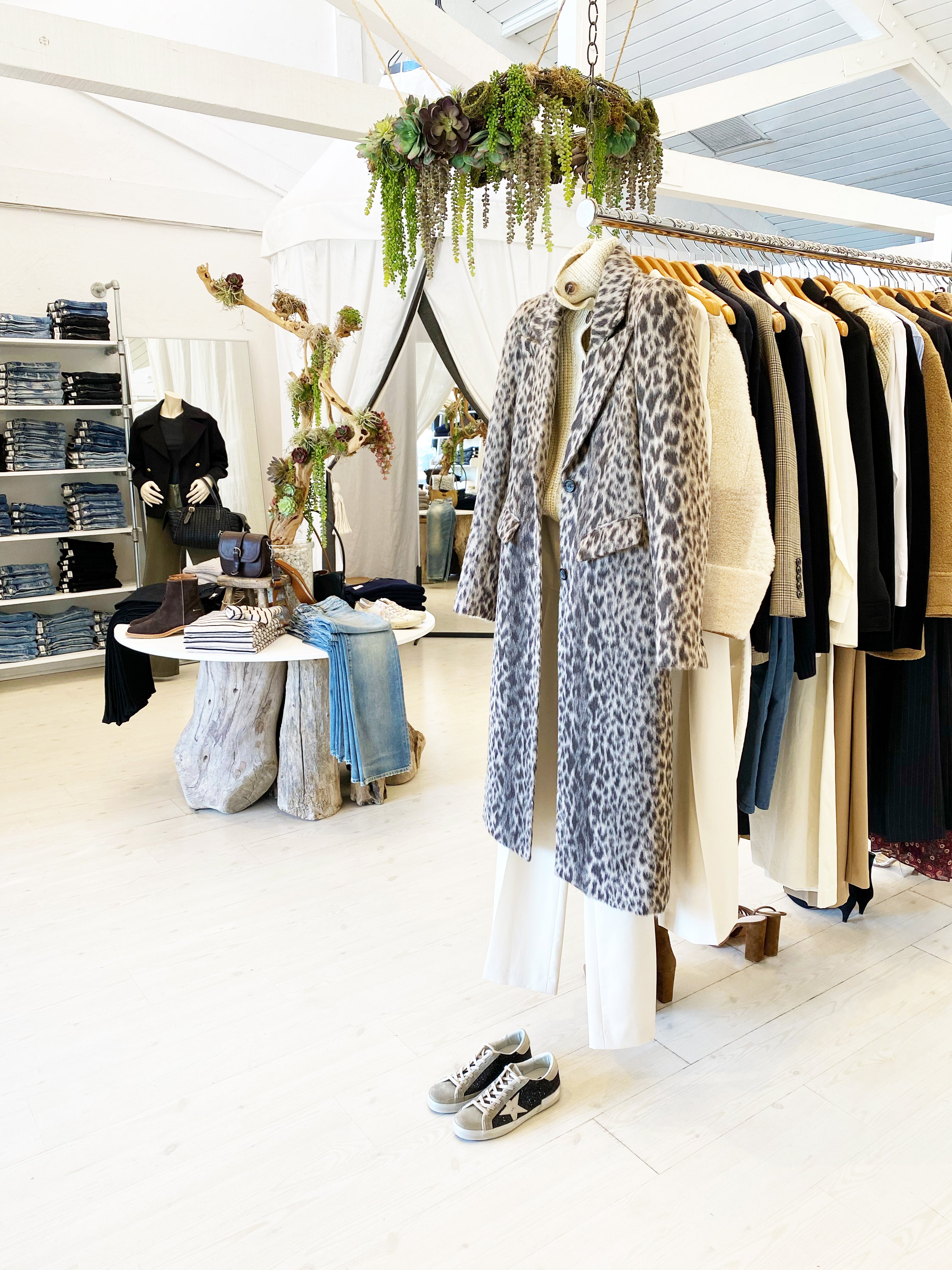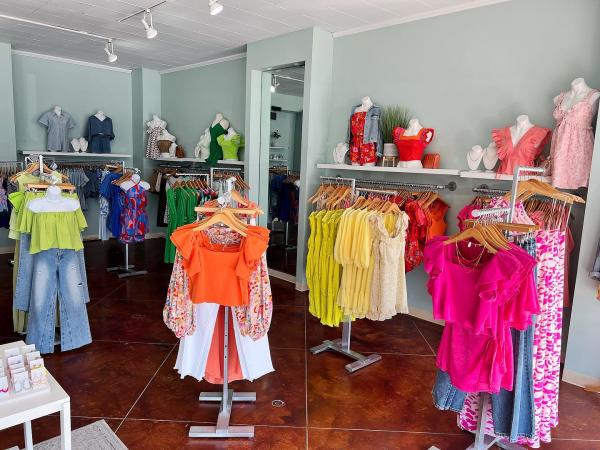The Rise of Online Shopping: Finding Boutique Fashion at Your Fingertips
The Rise of Online Shopping: Finding Boutique Fashion at Your Fingertips
Blog Article
Lasting Fashion: How Eco-Friendly Apparel Is Forming the Future of Design
As the apparel industry faces increasing scrutiny over its ecological impact, the increase of lasting style provides an appealing alternative that aligns style with environmental responsibility. Utilizing innovative materials such as plant-based fabrics and recycled fibers, along with innovative techniques like electronic and 3D printing, designers are redefining what it implies to be fashionable in the contemporary age. Concurrently, the growing popularity of upcycling and thrift culture is cultivating a shift towards a circular economy. Yet, how does this movement absolutely affect the future trajectory of style, and what difficulties lie in advance in its extensive adoption?
Ingenious Lasting Materials
As the style sector comes to grips with its environmental influence, ingenious lasting products have actually emerged as a critical option for decreasing ecological footprints. Among the most encouraging materials are those stemmed from all-natural, renewable sources, such as natural cotton, hemp, and bamboo. These materials not only minimize reliance on nonrenewable fuel sources however also reduce unsafe pesticide usage and water usage. Organic cotton, for instance, makes use of significantly much less water than conventional cotton and eliminates the need for hazardous chemicals, consequently preserving soil wellness and biodiversity.
In addition to plant-based products, innovations in biofabrication have actually led to the development of lab-grown fabrics. Mycelium natural leather, stemmed from mushroom origins, provides a flexible and naturally degradable option to pet natural leather. Its production leads to considerably lower carbon emissions and water usage, making it a much more lasting alternative for style developers seeking to align with green techniques.
Recycled products are additionally getting traction, with polyester made from recycled plastic bottles representing a considerable advancement. This technology not just diverts plastic waste from land fills and oceans yet also reduces power consumption contrasted to creating virgin polyester. Together, these products underscore the capacity for a much more lasting apparel industry, leading the way for ecologically conscious style and manufacturing.
Eco-Conscious Production
Structure on the developments in sustainable products, the style sector is also re-evaluating its manufacturing processes to better reduce ecological impact. Secret techniques include minimizing water consumption, lowering carbon discharges, and eliminating hazardous chemicals. By adopting closed-loop systems, producers aim to recycle water and power efficiently, considerably diminishing waste. The assimilation of eco-friendly power sources, such as solar and wind power, right into production facilities further curtails reliance on fossil fuels.
Another crucial element is the reduction of hazardous chemicals typically used in coloring and ending up fabrics. Eco-conscious producers are changing towards plant-based dyes and waterless dyeing technologies, which not only protect local ecological communities but likewise enhance worker safety. Advancements like digital printing lower fabric waste and power consumption, offering a cleaner alternative to conventional techniques.
Additionally, transparency and traceability have become extremely important. With the innovation of blockchain modern technology, business can currently give thorough understandings right into their supply chains, making certain ethical and eco-friendly methods at each action. This transparency builds consumer depend on and motivates brand names to keep high sustainability requirements. As the need for eco-conscious items grows, suppliers are obliged to innovate, guaranteeing that the future of style is both sustainable and fashionable.
The Surge of Upcycling
Upcycling, a transformative technique in lasting fashion, entails artistically repurposing disposed of products into brand-new, top quality items. This innovative method not only reduces waste yet additionally lessens the need for raw products, thus decreasing the ecological influence of clothing manufacturing. By reimagining and reconstructing existing things, developers and fashion brand names have the ability to infuse originality right into their collections while advertising environmental duty.

Additionally, the upcycling movement has actually equipped local business and independent designers, that usually lead in innovation because of their dexterity and creativity. By maximizing the abundant availability of unused products, these entities add to a round economic climate, showing that fashion can be both lasting and trendy. With upcycling, the industry takes significant strides towards an extra aware and liable future.
Thrift Society's Influence
The growing second hand society significantly reshapes the landscape of lasting style, highlighting the value of conscious consumption. This social change motivates consumers to welcome used apparel, try these out therefore minimizing the demand for new garment production and reducing ecological effect. Second hand buying not only prolongs the lifecycle of clothing however also decreases the carbon footprint connected with production, delivering, and getting rid of garments.
An essential facet of thrift culture is its democratization of fashion. By providing a wide array of designs from various periods at cost effective prices, thrift stores make fashion accessible to a more comprehensive audience. This access fosters a sense of uniqueness and creative thinking, as consumers mix and suit special items to curate tailored wardrobes without adding to the rapid style cycle.
Moreover, thrift culture advertises circularity in fashion, lining up with the principles of a circular economic situation. By recirculating garments, the cycle of waste is interrupted, and sources are saved. This technique sustains a change from a linear "take-make-dispose" version to a more sustainable This Site framework. As even more customers and developers welcome thrift culture, the fashion market is forced to adjust, incorporating sustainable methods to fulfill the expanding need for eco-conscious alternatives.

Future Trends in vogue
Style's advancement is significantly formed by technical developments and sustainability-driven campaigns. As customers come to be a lot more eco aware, the market is responding with groundbreaking developments that redefine the future of style. One popular fad is the rise of electronic fashion, where online garments can be put on in augmented truth atmospheres, considerably decreasing textile waste. This change not just provides to the digital-savvy consumer however also reduces the ecological impact typically related to garment manufacturing.
In addition, the combination of blockchain modern technology supplies new opportunities in transparency and traceability, enabling consumers to validate the sustainability credentials of their clothing. boutique fashion. This makes certain responsibility in supply chains and promotes moral sourcing techniques. 3D printing is yet one more development that promises to change manufacturing processes by enabling on-demand manufacturing, thereby reducing excess inventory and waste
As these technologies mature, they are poised to change the style landscape, combining design with sustainability. The future of style, consequently, lies in a seamless blend of innovation, technology, and environmental duty.
Conclusion
The transformation of the fashion business through sustainable techniques indicates a critical change in the direction of environmental liability. The combination of ingenious products, eco-conscious manufacturing strategies, and the embracement of upcycling and second imp source hand culture highlights a dedication to minimizing ecological footprints. As these techniques acquire momentum, they redefine the market's story by focusing on ethical and sustainable choices. This development not just straightens fashion with ecological sustainability but also sets a criterion for future trends concentrated on duty and advancement.
As the style market faces raising analysis over its ecological effect, the surge of lasting style uses an encouraging choice that aligns style with eco-friendly responsibility.As the fashion sector grapples with its ecological effect, ingenious lasting materials have arised as a critical solution for lowering eco-friendly footprints. With each other, these products highlight the capacity for a more lasting fashion industry, paving the way for eco aware style and production.
Structure on the technologies in lasting products, the fashion industry is likewise re-evaluating its production processes to better decrease environmental influence. boutique fashion.Upcycling, a transformative technique in lasting style, entails artistically repurposing disposed of materials right into brand-new, premium items
Report this page